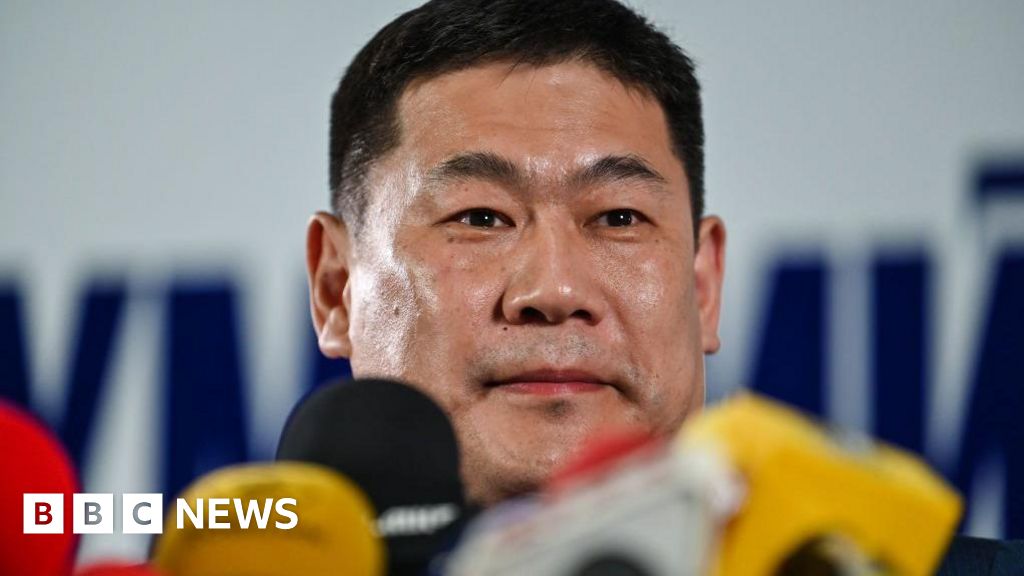ARTICLE AD BOX
The United States has long undersold itself when pricing its investor visas, according to President Trump, whose new Gold Card program would raise the stakes to similar levels as what the wealthy pay to live in America’s competitors.
Mr. Trump announced the Gold Card initiative in February, saying the special visa would cost $5 million and bring wealthy and successful people to America, where “they’ll be spending a lot of money and paying a lot of taxes and employing a lot of people.”
The program will replace the EB-5 program, also known as a golden visa, which allows foreigners to obtain legal resident status and a work permit or green card if they invest a certain amount of money that creates at least 10 jobs. The legal resident status would also apply to members of the investor’s immediate family.
Mr. Trump said the Gold Card will do all of that, plus open a pathway to citizenship and an exemption from taxes on foreign incomes.
The program saw rampant fraud in the past, leading to calls to shut it down. Instead, Congress raised the investment threshold and imposed new restrictions, which Commerce Secretary Howard Lutnick said the Gold Card would eliminate.
The current investor visa generally costs a $1.05 million investment, though those who invest in specially targeted areas can get an EB-5 visa by ponying up $800,000.
The Gold Card’s $5 million price tag is certainly a price hike from the EB-5, but it is not the most expensive investor visa program in the world.
Singapore’s Global Investment Program asks for a minimum investment of more than $7.7 million, according to Henley & Partners, a residence and citizenship investment firm. The key benefit is a pathway to citizenship after two years of permanent residence.
Several other countries’ investment visas top $1 million, such as the Czech Republic’s $3.4 million and New Zealand’s roughly $3 million golden visas.
Australia’s investment visa comes in at roughly $1 million.
Other countries, however, are moving in the opposite direction. The U.K. had a $2.6 million golden visa before canceling the program in February 2022 because of concerns about national security and financial fraud.
The price of Mr. Trump’s Gold Card positions it “as a viable premium alternative within the international investment migration ecosystem,” said Dominic Volek, group head of private clients at Henley & Partners.
“With the right residency terms, tax incentives, and an efficient application process, the Gold Card certainly has the potential to succeed,” he told The Washington Times in an email.
He also said his company has seen interest from ultra-high-net-worth individuals in Asia and affluent Indian and Bangladeshi nationals.
Mr. Lutnick said to expect the soon-to-be-launched Gold Card website, trumpcard.gov, to be busy.
“Everyone I meet who’s not an American is going to want to buy the card if they have the fiscal capacity,” he told Axios. “Because why wouldn’t you want a plan B that says, ’God forbid something bad happens, you come to the airport in America, and the person in immigration says welcome home?’”
He said the card is for those “who can help America pay off its debt,” and everyone who applies will be vetted.
Elon Musk recently said the administration is doing a “quiet trial to make sure the system works properly” before releasing it to the public.
A key driver for the super-rich would be a more favorable tax treatment than under the EB-5 program. Any exemption from taxation on worldwide income would “serve as a powerful driver of demand among affluent investors,” Mr. Volek said.
He said Henley & Partners is cautiously optimistic about the Gold Card’s success since the pool of those who can afford it is small.
“With the right strategic execution and international marketing support, the Gold Card could emerge not only as a new flagship offering for U.S. immigration but also as a benchmark for elite-tier migration worldwide,” he said.
Mr. Trump said the U.S. will be able to sell a million or more of Gold Cards, which he dubbed a green card with “a higher level of sophistication.”
Those that fit the bill are unique. A 2024 report from Henley & Partners found that there are fewer than 30,000 centimillionaires in the world.
A $5 million card would be 5% of their net worth.
Some Republican lawmakers are on board with the president’s plan. Sen. John Cornyn, Texas Republican, told Semafor in March that they were working on some legislation to make it possible.
“It is sort of the ultimate merit-based immigration,” Mr. Cornyn said. “And if we continue to attract the smartest, most accomplished people from around the world to America, that’s good for all of us.”
He told Migrant Insider that the Gold Card should be added “on top, not in lieu of, the EB-5.”
Sen. Rand Paul, Kentucky Republican, aired similar sentiments, telling Roll Call that he doesn’t think it should replace the EB-5 program.
“There are a lot of people who come to this country with the EB-5 level that might not come at the $5 million level,” he said.
Democrats are much less interested in Mr. Trump’s Gold Card.
Rep. Ro Khanna, California Democrat, said the focus should be on the H1-B visa program that provides a temporary visa for skilled workers, rather than the net worth-based requirement of the EB-5 visa.
“You don’t need to have $5 million in your bank account to build a successful company in America. Just look at Sergey Brin, Sundar Pichai, or Satya Nadella,” Mr. Khanna recently told Newsweek in a statement.
Mr. Brin is the Russia-born co-founder of Google. Mr. Pichai and Mr. Nadella were born in India and now run Google and Microsoft, respectively.
“We should welcome talented workers to America who will bring their creativity and productivity while also reforming the H1-B program to prevent abuses,” Mr. Khanna said.

 3 weeks ago
46
3 weeks ago
46








 English (US) ·
English (US) ·